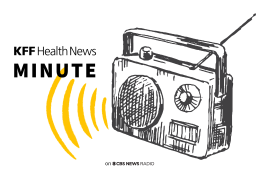Amid Shutdown, Health Care Lobbyists Tiptoe Around Topics To Pursue Wins
Health care advocates tread a delicate line when it comes to discussions about politically charged ACA subsidies, but they see opportunities to sway lawmakers on bipartisan issues such as telehealth. Meanwhile, moderate Republicans lean on House leadership to address expiring ACA subsidies.
Modern Healthcare:
Government Shutdown Opens Opportunity For Telehealth Lobbyists
The government may be shut down but it’s no vacation for healthcare lobbyists. The standoff between the Republican congressional majority and the Democratic minority that triggered the shutdown at the start of fiscal 2026 on Oct. 1 is centered around a battle over health insurance exchange subsidies, but there’s much more on the line for the healthcare sector. (McAuliff, 10/21)
The latest on the federal shutdown —
The Hill:
Moderate Republicans Push For Extension Of Health Subsidies
A group of front-line House Republicans on Tuesday called on Speaker Mike Johnson (R-La.) to “immediately” address the expiring enhanced ObamaCare tax credits once the government shutdown ends. Led by Reps. Jeff Van Drew (R-N.J.) and Jen Kiggans (R-Va.), 13 lawmakers told Johnson that millions of their constituents would face a massive spike in health premiums without an extension of the subsidies before their expiration at the end of the year. (Weixel, 10/21)
The Hill:
Senate GOP Chatter Rises On Filibuster Reform To End Shutdown
Senate Republicans are increasingly chattering about changing the filibuster’s rules if Democrats do not end the shutdown, even though Senate Majority Leader John Thune (R-S.D.) says he opposes weakening a tool safeguarding the minority’s power. Initially, there was no discussion about filibuster reform when it came to the shutdown, but the idea is getting more attention in Republican circles as the stalemate drags on. (Bolton, 10/22)
NBC News:
Food Banks And Community Groups Brace For Spike In Demand As Shutdown Continues
Food banks from coast to coast were already seeing an uptick in visits from federal workers who are furloughed or working without pay. Now, they are preparing for an additional influx from Americans who rely on federal food benefit programs, which are set to run out of funding at the end of the month, such as the Supplemental Nutrition Assistance Program, known as SNAP or food stamps, and WIC, the food program for women, infants and children. (Nobles, 10/21)
ABC News:
Some Americans Fear High Health Insurance Premiums If ACA Enhanced Subsidies Expire: 'Very Much A Worry'
As the federal government shutdown enters its third week, some Americans are worried about the future of the Affordable Care Act (ACA) subsidies. The subsidies, or premium tax credits, help lower or eliminate the out-of-pocket cost of monthly premiums for those who purchase insurance through the health insurance marketplace. They were enhanced during the COVID-19 pandemic and are currently set to expire at the end of 2025. (Kekatos, 10/21)
KFF Health News:
A New Car Vs. Health Insurance? Average Family Job-Based Coverage Hits $27K
With the federal shutdown entering its fourth week, spurred by a stalemate over the cost of health insurance for 22 million Americans on Affordable Care Act plans, a new report shows that over 154 million people with coverage through an employer also face steep price hikes — and that the situation is likely to get worse. Premiums for job-based health insurance rose 6% in 2025 to an average of $26,993 a year for family coverage, according to an annual survey of employers released Oct. 22 by KFF, a health information nonprofit that includes KFF Health News. (Galewitz, 10/22)
The New York Times:
Obamacare Is Expensive. But So Is All Health Insurance.
The main difference is that most Americans don’t confront the full cost of their coverage. (Abelson and Sanger-Katz, 10/22)
Also —
Stat:
Institutions Move To Provide Data Now Found In CDC MMWR Journal
In the latest bid to plug gaps in the federal government’s public health infrastructure, two institutions are coming together to create an alternative to the Centers for Disease Control and Prevention’s vaunted Morbidity and Mortality Weekly Report — often called “the voice of the CDC.” (Oza, 10/21)






